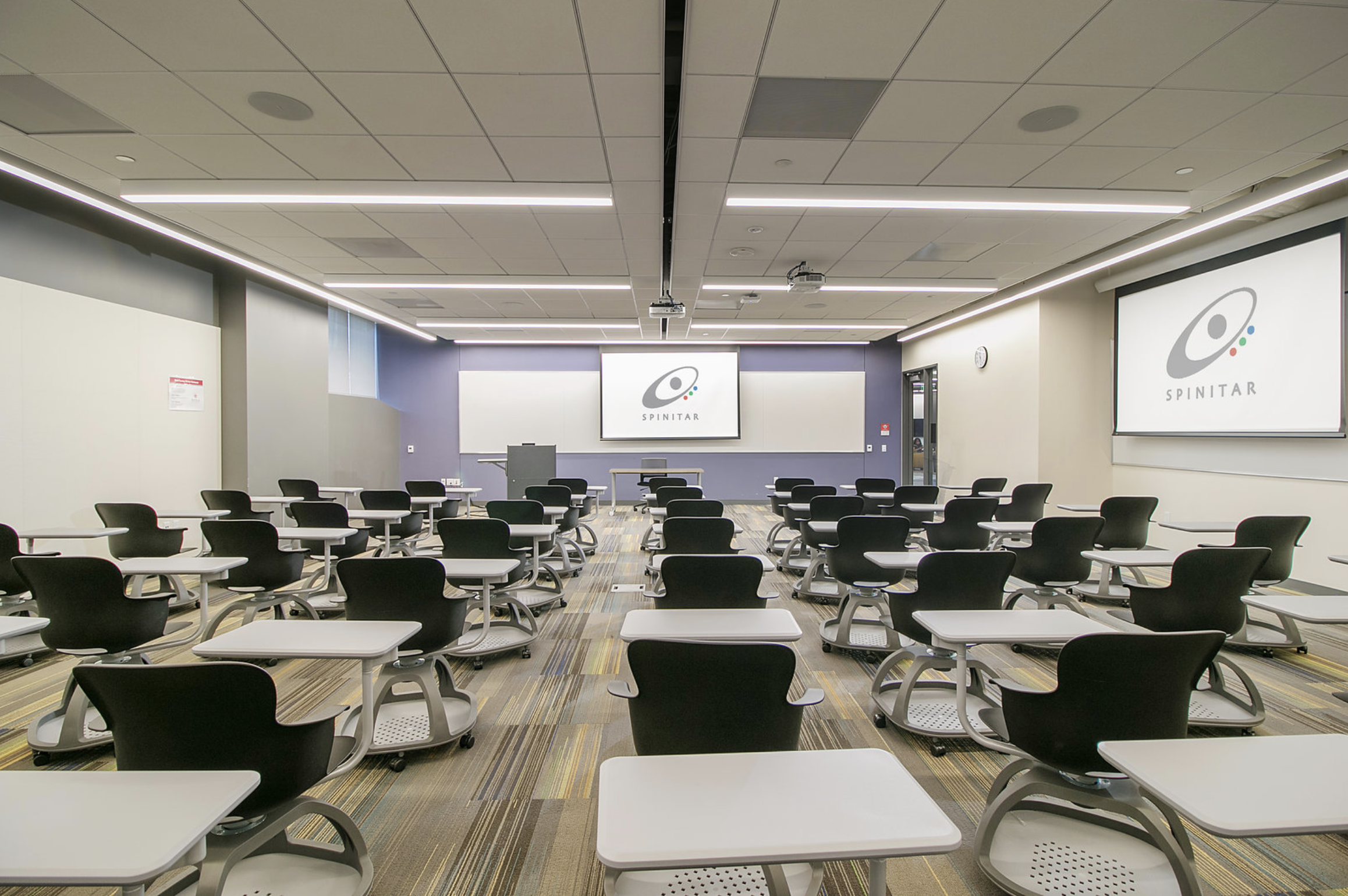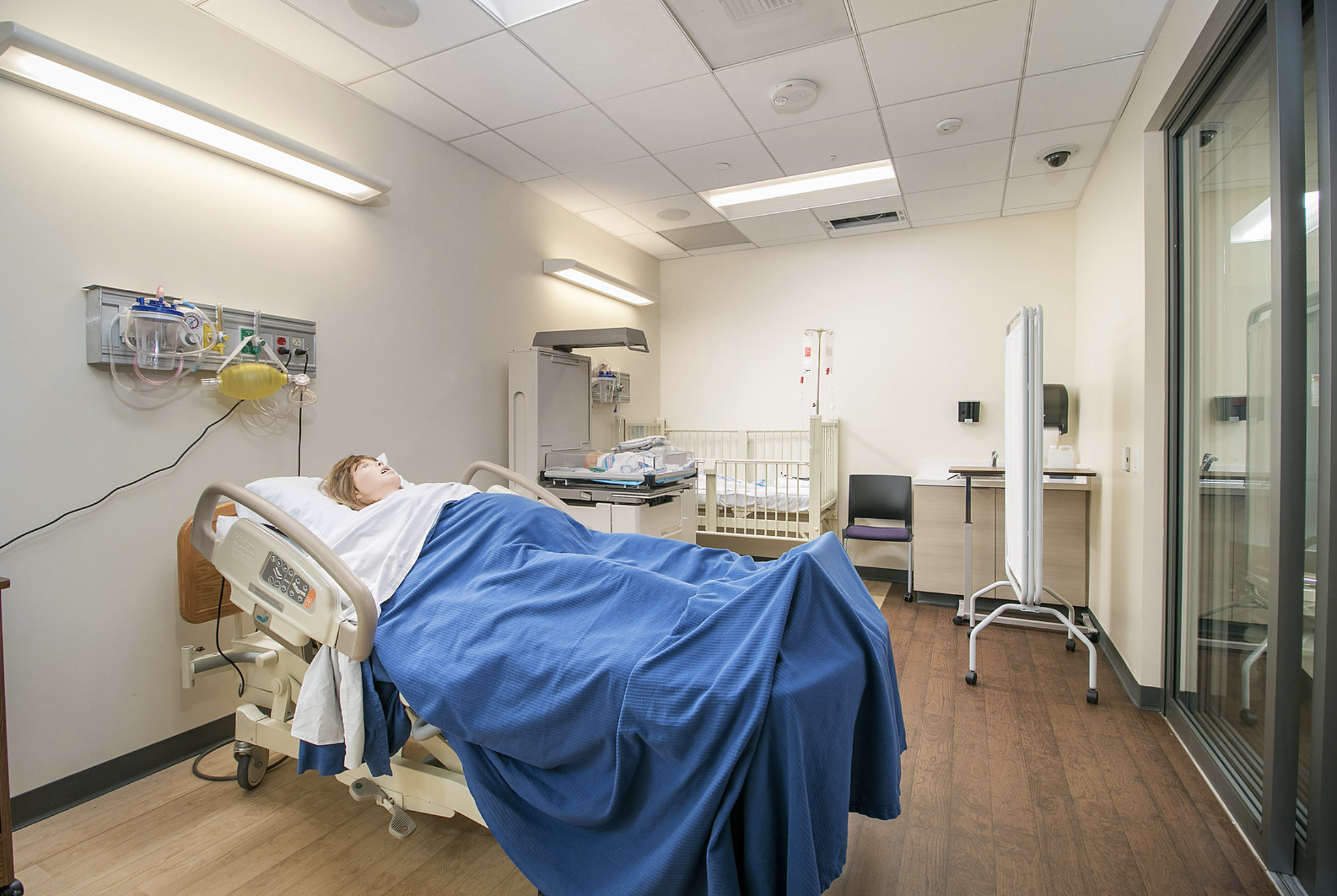Optimal and Functional
Spinitar Works with Biola University to Create Standardized Classrooms

Biola University is growing fast—in fact, it was recently recognized as a “Top 10 Up and Coming” national university by U.S. News & World Report. Founded in 1908, the Southern California institution serves more than 6,000 students and offers over 150 online, in-person, and in-distance programs at the baccalaureate, graduate, and doctoral levels.
With such large growth, it’s not surprising that the university decided to further develop its campus with a new building—the Lim Center for Science, Technology, and Health—to accommodate its curriculum and expanding student body.
To meet the needs of both students and instructors, the Lim Center would need a state-of-the-art AV system that could also be standardized and unified with the university’s existing system. Anthony Valentino, director technical support, information technology, Biola University said the main goals of this project were “developing learning spaces with advanced technology and engaging students with innovative technology—while staying within our budget and timeline.”
To start the project, Biola’s IT team chose to work with SCN Top 50 integrator Spinitar. Spinitar–originally introduced to the Biola staff by its manufacturing partner Crestron—had worked with the university on several other implementations. “We had developed a partnership with Carl Adams at Spinitar who helped us evaluate technology and establish standards for our classrooms, conference rooms, and active learning spaces,” said Valentino. “We feel as though Spinitar is part of our team, and is doing their best for us, our students, and our professors.”
To ensure the installation stayed in budget and on time, Spinitar built an “optimal and functional plan,” according to Valentino. The budget was pre-built to avoid any surprise costs, and Spinitar attended weekly project status meetings with Biola to ensure there was consistent and transparent communication. Working closely together allowed Biola to save approximately $150k in additional fees on this $650k project, according to the integrator.
In the planning process, Spinitar developed standards for classroom AV in the Lim Center, which were only allowed to be modified for specific use cases. The university’s Dean specifically requested to reduce the number of lecterns so only a few classrooms have lecterns and the remaining rooms have a small AV cart—which is semi-hidden.
All classrooms use Epson HD projectors and Creston Digital Media and control systems, including Crestron amplifiers and speakers. With standardized touch panels and control equipment across the campus, instructors have the confidence and expertise to utilize all of the technologies with ease, says Spinitar.
A daily selection of the top stories for AV integrators, resellers and consultants. Sign up below.

The integration firm also incorporated a centralized management system into the Lim Center AV system to allow for remote help desk support and analysis for all AV systems on campus. “This type of forward-thinking also serves as a launchpad for updating future classrooms, while providing Biola’s IT team better information and support capabilities across all standardized classrooms with the integration of Crestron Fusion,” said Carl Adams, account manager, Spinitar.
In nursing simulation rooms, AV and communication hardware and software allow professors and instructors to observe, record, and manage audio and video during simulated training experiences. Cameras, microphones, speakers, and IVIS software assist with instructor/student engagement by providing two-way communication.
“In addition to high-performance anatomy labs, the nursing labs contain the most technologically advanced system on campus. Equipped with nursing simulation technology, end-users have the ability to monitor, record, and interact as labs are performed,” said Adams. “While high-performance technology is key to the advancements of learning and teaching at Biola University, it is also key for their donor support program. With innovation comes greater donor participation.”
“The students and faculty are thrilled with the new technology,” concluded Valentino. “They are seeing the results of a dedicated team effort between Biola IT and Spinitar. The new technology enhances student learning and has been readily adopted by all.”
Megan A. Dutta is a pro AV industry journalist, and the former content director for Systems Contractor News (SCN) and Digital Signage Magazine, both Future U.S. publications. Dutta previously served as the marketing communications manager at Peerless-AV, where she led the company’s marketing and communications department. Dutta is the recipient of AVIXA's 2017 Young AV Professional Award and Women in Consumer Technology's 2018 Woman to Watch Award. Dutta is co-founder of Women of Digital Signage, an organization designed to provide a pathway to promote networking, mentoring, and personal growth.

